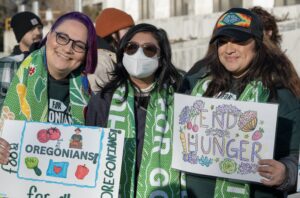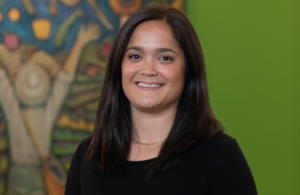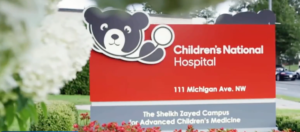Food Bank News has determined that 21 of the 100 largest food banks in the country are utilizing best practices in advocacy.
These 21 food banks are active in all four of the areas Food Bank News identified as vital to having an effective advocacy program, placing them on the “High Honor Roll” for advocacy. An additional 31 food banks were found to be active in three of the four areas, granting them the distinction of “Honor Roll.”
For an in-depth look at all the food banks on our High Honor Roll and Honor Roll, as well as additional information, see our special report, Advocacy Honor Roll.
The ability to go beyond distributing food and engage in activities aimed at alleviating the need for food in the first place is becoming increasingly important in the hunger-relief community. These efforts are rooted in the understanding that SNAP is up to nine times more effective than the charitable food system in alleviating hunger. Initiatives to expand SNAP and other federal benefits are at the heart of many food banks’ advocacy plans.
Food Bank News developed a framework for identifying excellence in advocacy by analyzing the advocacy activities of the 100 largest food banks (by revenue). The analysis found four activities common among food banks that prioritize advocacy. These include:
- SNAP outreach
- Advocacy page
- Details of legislative priorities
- Calls to action
All of these elements needed to be discoverable on a food bank’s website. As such, our analysis leaves off other important advocacy activities, such as having a speaker’s bureau or large delegations to visit legislators. It also does not include the advocacy activities of food banks outside of the 100 largest (by revenue).
Of the four activities, SNAP outreach emerged as the most common by far, available at 73 of the largest 100 food banks. The level of outreach varied, with some food banks making eligibility worksheets, submittable forms, employee emails and hotline numbers available on their sites, while others provided only simple links to other sites. Mid-Ohio Food Bank stood out for having information on common myths about SNAP on its site, in addition to eligibility information and lots of application assistance. The Food Bank of Central and Eastern North Carolina included reassuring quotes from SNAP applicants to encourage people to sign up. The Jacobs and Cushman San Diego Food Bank has a comprehensive SNAP outreach page that includes a helpful picture of what the benefit card looks like, as well as eligibility information in Spanish.
Often, SNAP assistance was easy to find (usually under a Find Food or Get Help tab), while other times it required more searching around, appearing several levels deep, say under an FAQ tab for Covid-related response. To meet the SNAP outreach requirement, food banks needed to at least offer a direct link to SNAP services, versus more general 2-1-1 assistance.
More than half of the top 100 food banks (54%) had pages specifically geared toward advocacy. These pages featured a wide variety of information, including links to legislative offices, summaries of relevant federal and state policy, research studies, and sometimes links to voter registration sites. San Francisco-Marin Food Bank was notable for having multiple pages devoted to advocacy, including a resource library and data tools that offer a deep dive into the state of local food insecurity.
Northwest Harvest in Washington stood out for its attention to the concept of food justice, in addition to advocacy. Among its food justice resources is its ten-year plan to cut Washington’s food insecurity rates in half by 2028. Further, the detailed 2021 legislative agenda available on its advocacy section includes priority items that go beyond food, such as affordable housing and health care.
Northwest Harvest was one of only 29 of the largest 100 food banks that explicitly outlined their legislative priorities, an action that indicates a deeper level of intention around specific policies. Ideally, the policy pages reflected current year initiatives. Capital Area Food Bank stood out for offering easy-to-read, one-page summaries of its 2021 priorities at both the local and federal levels, as well as much more detailed documents, all downloadable from its website.
Finally, 51 of the largest 100 food banks included at least one (and sometimes several) interactive calls to action around advocacy. These might include signing up for an advocacy newsletter, contacting a legislator, registering to vote, or taking a pledge to fight hunger. Notably, the Food Bank for New York City made it extremely easy for visitors to meaningfully get in touch with legislators by providing a detailed letter they could send from the site by simply adding their contact information. — C.C.
For an in-depth look at all the food banks on our High Honor Roll and Honor Roll, as well as additional information, see our special report, Advocacy Honor Roll.









